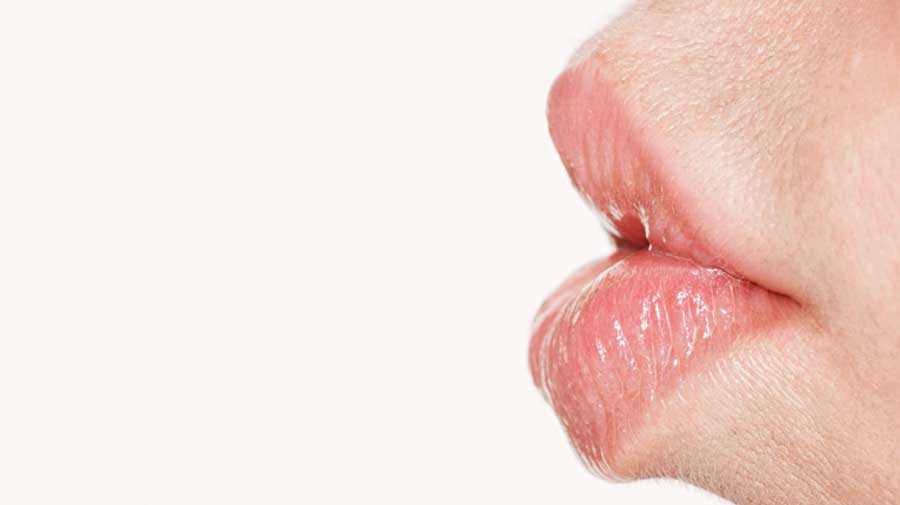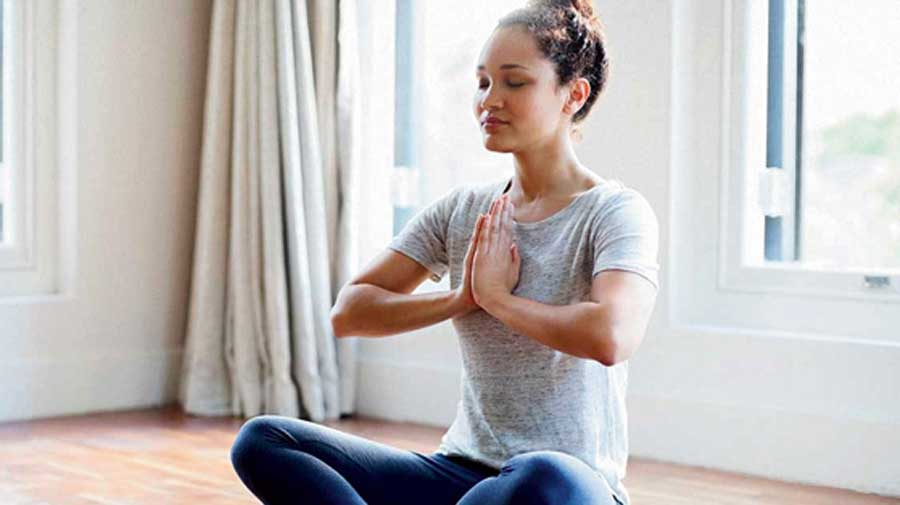The second wave of Covid-19 is wreaking havoc. Complicating the situation are other viruses. A common cough-and-cold is different from the coronavirus. A flu typically lasts a week with symptoms such as a persistent coughing, runny nose accompanied with mild weakness and congested sinus. Covid, however, attacks the respiratory and immune system in a big way.
Many have successfully fought Covid-19 and are trying to carry on with daily life. It is, however, crucial to recognise the line between sufficient rest and falling into a deep resting phase. Rest can be a double-edged sword. After getting sufficient amount of rest, it is essential to resume one’s journey towards a healthy lifestyle. It’s a second chance at life.

Exercise enables our mind to be more receptive to the environment and allows our reflexes to be at its optimal efficiency Sourced by The Telegraph
The first steps
One of the best ways for steady recovery involves a healthy respiratory system. This can be attained by simply adopting a few basic exercises.
Having control over one’s breathing pattern has always been our goal. Before setting out on a hunt, our ancestors closed their eyes — chest puffed up — and took a deep breath to awaken one’s senses. Though it may appear simple, it’s a good technique to have healthy lungs.
It is a good practice to sit on the bed, inhale a deep breath, hold it for a few seconds and then gradually release it with lips pursed. As the lungs receive air, it swells with oxygen, allowing the body to awaken. Holding one’s breath activates lung muscles, providing strength. A gradual release of the air activates the diaphragm, enabling the abdomen to awaken.
Written by Dr John J. Ratey, an associate clinical professor of psychiatry at Harvard Medical School, the book Spark: The Revolutionary New Science of Exercise and the Brain explores the connection between exercise and the brain. His writings offer evidence that exercising physically remodels the brain for peak performance on all fronts, especially mental health on a dynamic level by optimising the mind’s alertness and attention. It facilitates the neuro systems to bind to one another, strengthening the nerves. In simpler words, exercise enables our mind to be more receptive to the environment and allows our reflexes to be at its optimal efficiency. For example, an individual with a history of workout will be able to be more mindful to prevent a fall or inherently act on his/her reflexes to break a fall as compared to an individual with a sedentary lifestyle. Exercise is a function that is highly essential for our well-being.
We are living in uncertain times when scientists and researchers are moving in uncharted territories. We must rely on science, which has always said that exercising is an important part of life. Increasing one’s activity level gradually is advisable. Begin with small steps towards physical activities and that too while consulting a doctor. Monitor your blood oxygen level and pulse rate (resting pulse rate and post-exercise pulse rate) using a pulse oximeter.

As the name suggests, we control the speed at which air is inhaled and exhaled. Inhale air slowly through the nose, hold it for a few seconds and release the air slowly through the nose. Releasing the air through the nose can be alternated with releasing through pursed lips. With practice, one can attain control over one’s breathing. Sourced by The Telegraph

Begin with small steps towards physical activities and that too while consulting a doctor…. Listen to your body. Should one feel weak, tired or breathless post-exercising, it is an indication to take a step back and allow the body to recover at its pace Sourced by The Telegraph
Understand your body
Listen to your body. Should one feel weak, tired or breathless post-exercising, it is an indication to take a step back and allow the body to recover at its pace. For instance, if previously an hour of brisk walking has been a good cardio routine, it’s likely that post-recovery, half an hour of brisk walk would be enough for the time being. Let the body gain momentum at its pace. Rest is important.
It is crucial to constantly consult a doctor, who needs to know all the readings. According to Dr Sandeep Sen, MD, who’s practising for the last 20 years as an internist, and is associated with Medica North Bengal Clinic, Siliguri, the following points are to be remembered. Looking after Covid patients for the last few months, he suggests extreme caution while exercising.
Progress is gradual. It is very important to start any form of physical activity slowly while being mindful to the body’s requirement for adequate rest.
- It is important to consult a doctor.
- Progress gradually. For people experiencing any blood-related symptoms, start with low-intensity exercises. Patients who have had pneumonia or any other respiratory symptoms during Covid infection, it is best to wait at least 10-12 days before starting any form of exercising. And that, too, the patient first needs to ensure he/she is Covid negative, is free of all symptoms and has fulfilled all quarantine requirements as per government guidelines. Start slow and monitor the respiratory rate. One must immediately cease exercising at the slightest discomfort.
- Patients suffering from chronic cardiac issues should not start any form of exercise without consulting a cardiologist. During and post-exercise, it is recommended to observe pulse rate, and the degree of breathlessness (if any), and any feeling of fatigue or discomfort.
- It is recommended to commence with light cardio. Yoga and stretches with breathing routines are permitted. It should be done under the supervision of a professional.
- Symptoms to look out for during exercise involve shortness of breath, muscle fatigue, chest pain, dizziness, nausea and light-headedness.
- Monitor your pulse rate, oxygen level, body temperature and respiratory rate manually. A portable electrocardiogram helps in many cases. Don’t forget to monitor your blood sugar level and blood pressure.

There are essentially three forms of breathing exercises — diaphragmatic or abdominal breathing, pursed-lip breathing and controlled breathing. Let’s look at each of them. Sourced by The Telegraph
Begin with simple exercises
While on the road to recovery, do basic exercises that have stood the tests of time. Revisiting fundamental exercises gives way to a slow but steady process. It enables one to understand the body’s physiology and limitations. Performing simple body-weight exercises is beneficial. Body-weight and resistance-band exercises are a good way to begin with. Squats, lunges, push-ups, plank variations, sit-ups are body-weight exercises that are suggested but be careful with the number of repetitions; best to begin with five-six repetitions of each at a slow pace.
Box or chair squats: These squats involve sitting on a chair or a box. Stand straight, with chest, glutes and abdomen muscles engaged. Descend into a squat. On feeling the box or chair, you ascend from squat position to the starting position. While descending/ ascending, it is crucial not to bend the torso forward. Put pressure on the heels (as opposed to toes) and have the knees flared outwards.
Band high pull: Place the arch of your shoes on the band. Acquire a firm grip over the middle part of the band (the part of the band that is in proximity to your hips). To perform a pull, we place a pronated grip (with palms facing down and elbows facing the floor) over the band. Tighten the chest, shoulders and core. Pull the band up to the collarbone. It is important to have the elbows pointed towards the sky when performing a pull.
Press: Depending on one’s strength, this can be performed with dumbbells, barbells or water bottles. With a solid grip over the preferred choice of resistance, place the weight at shoulder height with elbows pointing towards the ground. Engaging the chest, arms, shoulders and core, press the weight up towards the sky. Return to starting position with the weights placed at shoulder height. It is important to have the arms extended when the weight is pressed up, resting overhead. The elbows must be straight. Don’t push the neck forward and hip backward while performing the exercise.
Plank: It organically works on the entire body, training the body to work against gravity. Lying on the ground with the abdomen on the floor such that the posterior is facing the ceiling, lift the body up by extending the arms. It is essential to have the shoulders perpendicular to the wrist, shoulders pulled back and down; core, glutes and calves contracted and tightened. The position can be held between 20 seconds and a minute, depending on one’s ability.
Dumbbell air punch: As the name itself suggest, it is merely punching the air, similar to boxing, by holding dumbbells. One foot is placed diagonally opposite the other, which is slightly ahead. One hand (right) moves forward so as to punch the air, while the other (left) remains placed below the chin, suspended in air with the elbows facing down and palms facing the wall in front. As the former hand (right) returns to chin level with elbows down and palms facing the wall in front, the other hand (left) punches the air. Around 10 repetitions provide a cardio-intensive workout.
Only if you are confident and the body is willing, jumping jacks, burpees, mountain-climber, high knees and skipping can be done.
Breathe easy
There are essentially three forms of breathing exercises — diaphragmatic or abdominal breathing, pursed-lip breathing and controlled breathing. Let’s look at each of them.
Diaphragmatic breathing
The diaphragm is a large muscle in the shape of a dome, separating the abdomen and the chest. It is situated below the lungs. The diaphragm essentially tenses and tightens when we inhale, creating an empty space to allow the lungs to hold the air we have inhaled. When we exhale, the diaphragm goes back to its dome shape, all the while pushing the air out, which we exhale. Inhale slowly through the nose, taking in a deep breath and filling the lungs with air. It is crucial to breathe in slowly and to take in a deep breath to activate the lung muscles along with the diaphragm. One must make an effort not to involve any movement of the shoulders while inhaling and exhaling.
Pursed-lip breathing
It is similar to diaphragmatic breathing with a slight deviation when it comes to exhalation. We take in a deep and slow breath in through the nose. Remember not to involve the shoulders as we breathe. Once the abdomen is filled with air, we gradually release the air through pursed lips. This release is slow and controlled.
Controlled breathing
As the name suggests, we control the speed at which air is inhaled and exhaled. Inhale air slowly through the nose, hold it for a few seconds and release the air slowly through the nose. Releasing the air through the nose can be alternated with releasing through pursed lips. With practice, one can attain control over one’s breathing. For example, it will be possible to inhale slowly for 30-40 seconds, followed by holding breath for half a minute and eventually releasing the air through pursed lips or nose over 30-40 seconds. It strengthens chest muscles and promotes the respiratory system’s optimum efficacy.
Anwar Wahhab is a metabolic analytic practitioner and strength and conditioning coach











